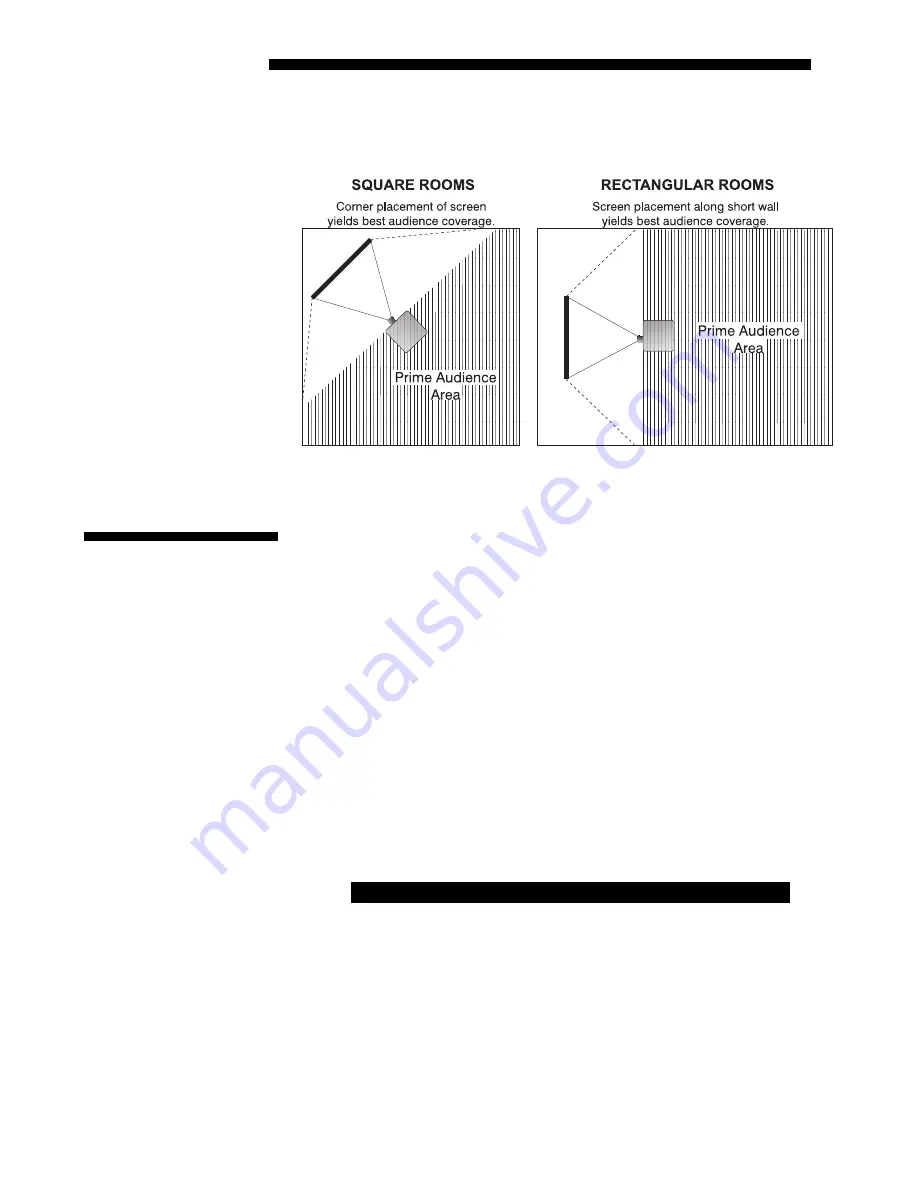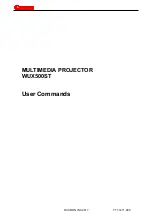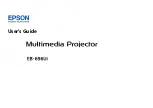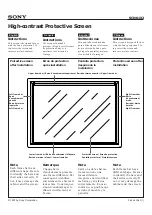
INSTALLATION & SETUP
2-8
DLV 1280 User's Manual
recognize a letter if eye-to-text distance is less than 150 times the height of
the letter. Text will normally become illegible at a greater distance despite
the sharpest and clearest of images.
Figure 2-8. Screen Locations for Maximum Audience Coverage
As mentioned, installation type, screen type, and lighting all affect where the
projector is positioned. In addition, both throw distance (the distance between
the projector and screen) and horizontal/vertical position must be determined for
every new installation. Both depend on screen size and projector lens type. Make
sure that the room can accommodate the required position of the projector for the
chosen screen size.
Throw distance is the distance between the projector's front feet and the screen
(measured perpendicular to the screen and projector, not necessarily parallel to
floor). As the distance between the projector and the screen increases, image size
also increases.
Throw distance is roughly equal to the horizontal width of the screen multiplied
by the type of lens you are using. For example, if using a 1.2:1 lens, throw
distance should be roughly equal to 1.2
x
the horizontal screen width. Once you
know your horizontal screen size, you can determine how far away the projector
should be:
Table 2-2. Throw Distance Guide
Lens Type
Approx. Throw Distance
2:1 - 3:1
2x to 3x horizontal screen width
1.2:1 (no zoom)
1.2x horizontal screen width
1.5:1 - 3:1
1.5x to 3x horizontal screen width
3:1 - 7:1
3x to 7x horizontal screen width
NOTES: 1) Throw distance is measured perpendicular to the screen and
projector, not necessarily parallel to the floor. 2) It is good practice to simulate
the setup with the projector fully warmed-up to determine the actual throw
distance required.
2.3
Projector
Position and
Mounting
Throw Distance
'












































